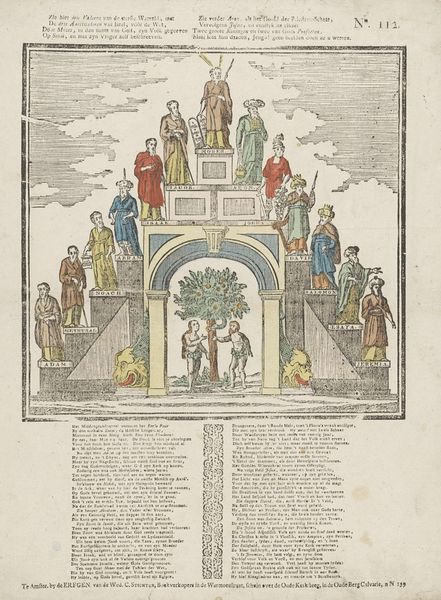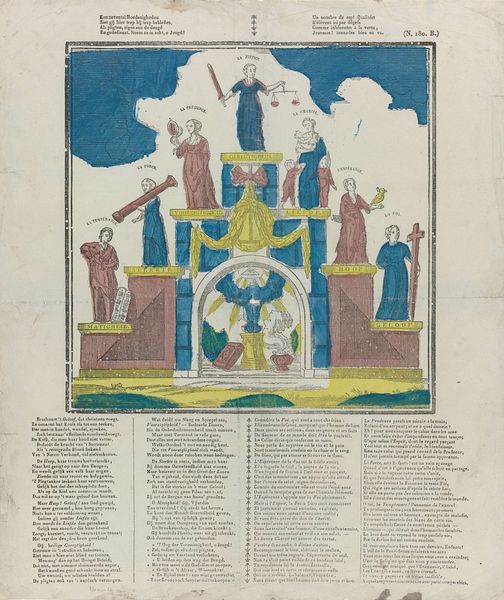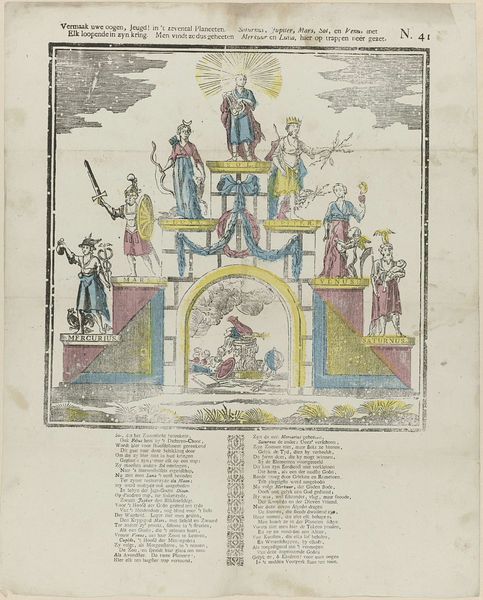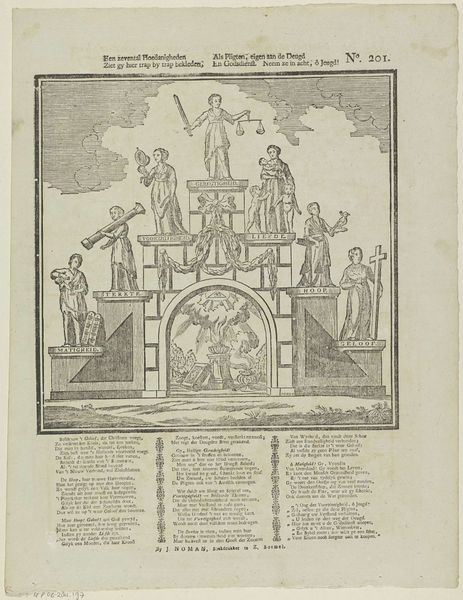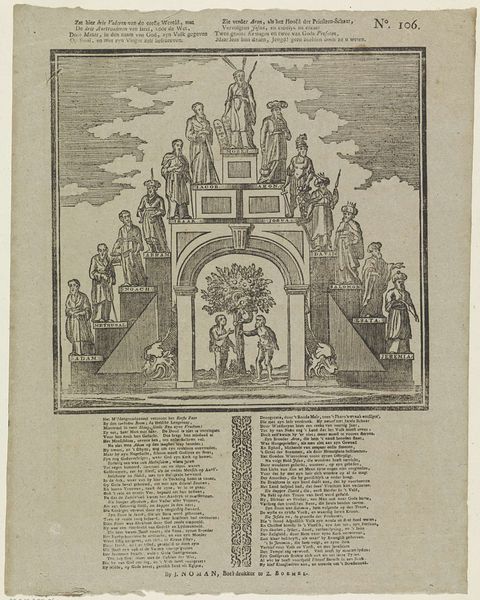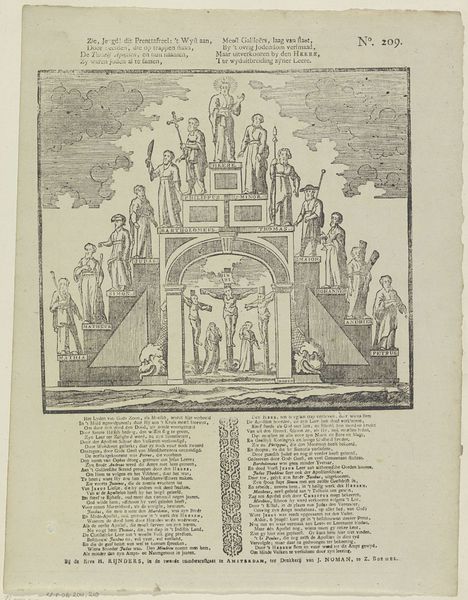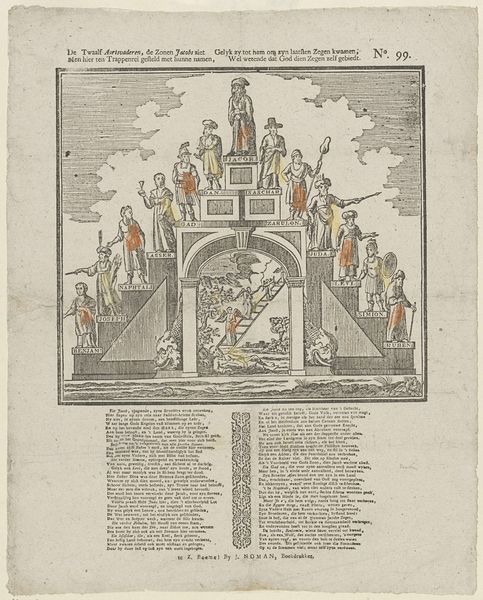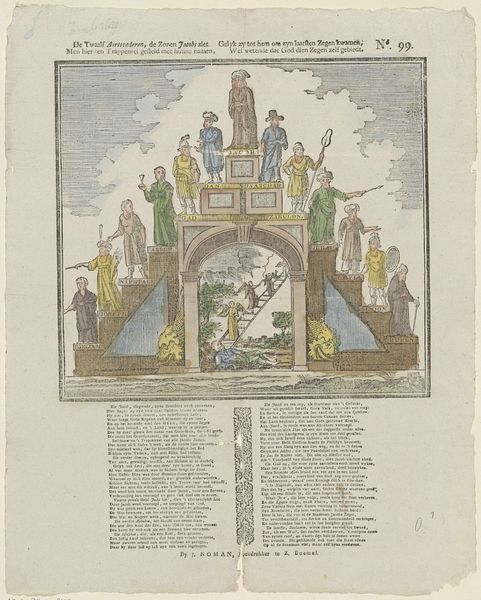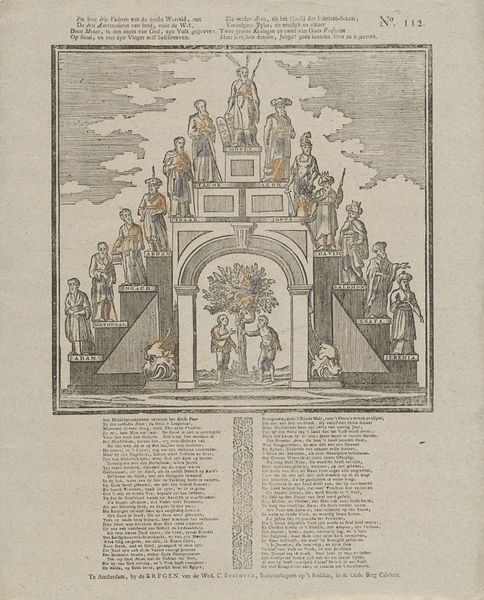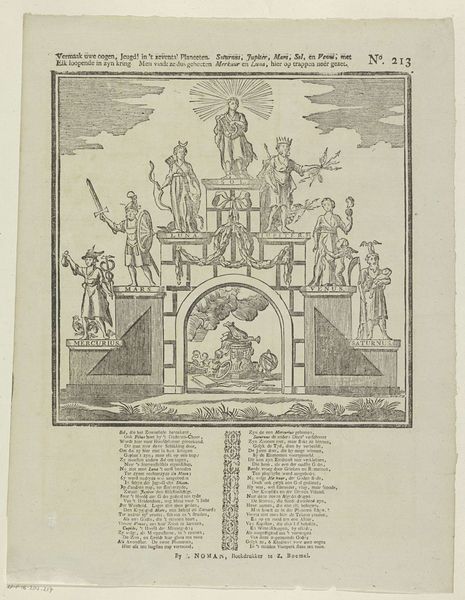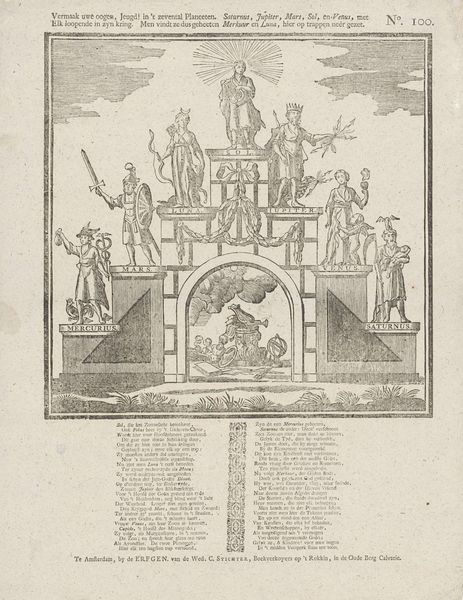
Een zevental hoedanigheden / Ziet gy hier trap by trap bekleden, / Als pligten, eigen aan de deugd / En Godsdienst neem ze in acht, ô jeugd! 1806 - 1830
0:00
0:00
arobyn
Rijksmuseum
print, engraving
#
neoclacissism
#
allegory
# print
#
history-painting
#
engraving
Dimensions: height 420 mm, width 327 mm
Copyright: Rijks Museum: Open Domain
Curator: Here we have “Een zevental hoedanigheden,” an engraving by A. Robyn, dating from between 1806 and 1830. The print, now residing at the Rijksmuseum, presents an allegorical tableau of virtues intended for youth. Editor: It feels instantly like a moral instruction, a careful construction of ascending ideals. I’m immediately struck by the way these figures are rigidly stacked, like virtues displayed on shelves. Curator: Precisely. Robyn utilizes Neoclassical elements to depict these “seven qualities,” constructing a visual lesson in virtuous living. The choice of engraving speaks to the desire for wide dissemination, suggesting a conscious decision to create a readily reproducible artwork for didactic purposes. The base inscription invites youth to ascend. Editor: Absolutely, that focus on mass reproduction intrigues me. Who was commissioning such works? What kind of workshops existed to create these engravings? The labor involved in creating and distributing these prints suggests a real commitment by a particular social class to instill particular values. How does that connect with its consumption? Curator: Consider that Robyn positioned virtues as both innate 'qualities' and learned 'duties.' It invokes a familiar social hierarchy of those who instill and those who are in need of it, further underscored by Neoclassical symbolism that hearkens back to ideas of stability and order, where each person holds an immutable place in an inherited schema of power. Editor: I'm also intrigued by this tower structure—are they standing on building materials? That emphasis, if deliberate, shows the literal labor on which a virtuous life is supposedly built. It’s as if Robyn implies that societal wellbeing is only ever a moral construct. Curator: An interesting observation! By foregrounding process and materials, it invites a different engagement with art, beyond mere visual reception. Instead, you recognize its construction through artistic conventions and also manual creation. I suppose then Robyn offers a template not just for seeing and thinking about virtue but for literally building it, too. Editor: So, on the whole, an artifact steeped in meaning, whose layered visuality resonates even across the distance of time, social structure, and labor. Curator: Indeed. A powerful intersection of cultural memory, artistic technique, and moral aspiration.
Comments
No comments
Be the first to comment and join the conversation on the ultimate creative platform.
